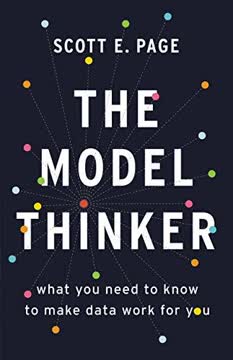Key Takeaways
1. Models Simplify Reality to Reveal Truths
It can scarcely be denied that the supreme goal of all theory is to make the irreducible basic elements as simple and as few as possible without having to surrender the adequate representation of a single datum of experience.
Simplification is key. Models are not meant to be perfect replicas of the world, but rather simplified representations that highlight key relationships and causal forces. By stripping away unnecessary details, models allow us to focus on the essential elements that drive a phenomenon. This simplification enables logical analysis and the generation of testable hypotheses.
Three classes of models. Models can be simplifications of the world, mathematical analogies, or exploratory, artificial constructs. Regardless of their form, models must be tractable, meaning they are simple enough to allow for logical analysis. This tractability allows us to derive insights, generate hypotheses, and design solutions.
All models are wrong. Because models simplify, they necessarily omit details and make assumptions that are not perfectly true. However, this does not invalidate their usefulness. By considering many models, each with its own simplifications and assumptions, we can gain a more comprehensive understanding of complex phenomena.
2. Many Models Offer Wisdom Through Diverse Lenses
To become wise you’ve got to have models in your head. And you’ve got to array your experience—both vicarious and direct—on this latticework of models.
Wisdom through multiplicity. The many-model thinking approach advocates using an ensemble of models to make sense of complex phenomena. This approach builds on the idea that wisdom is achieved through a multiplicity of lenses, allowing us to see the world from different angles and appreciate its inherent complexity.
Counter to tradition. The many-model approach runs counter to the traditional approach of relying on a single model for a given problem. While single models can be useful, they are inherently limited by their assumptions and simplifications. By engaging with many models, we can overcome these limitations and build a more nuanced understanding.
Building a lattice of models. By learning and applying a variety of models from different disciplines, we can begin to build our own lattice of understanding. This lattice allows us to see how causal processes overlap and interact, creating the possibility of making sense of the complexity that characterizes our economic, political, and social worlds.
3. Data Abundance Demands Model-Based Thinking
We’ve got facts, they say. But facts aren’t everything; at least half the battle consists in how one makes use of them!
Data is not a panacea. While the era of big data provides unprecedented access to information, it is not a substitute for critical thinking and model-based reasoning. Data alone cannot tell us why something happened or what will happen in the future.
Models organize and interpret data. We need models to make sense of the fire-hose-like streams of data that cross our computer screens. Models provide a framework for organizing and interpreting data, allowing us to identify patterns, test hypotheses, and make predictions.
Models improve decision-making. Without models, people suffer from cognitive shortcomings, such as overweighting recent events and ignoring base rates. Models clarify assumptions, promote logical thinking, and leverage big data to test causal claims, leading to better decisions.
4. Rationality, Rules, and Adaptation Guide Human Modeling
It is not possible yet to point to a single theory of human behavior that has been successfully formulated and tested in a variety of settings.
Modeling human behavior is challenging. People are diverse, socially influenced, error-prone, purposive, adaptive, and possessed of agency. These characteristics make it difficult to create simple, universal models of human behavior.
Three approaches to modeling people. We can model people as rational actors who make optimal choices, as rule-based actors who follow fixed or adaptive rules, or as a combination of both. The choice of approach depends on the context and the goals of the model.
Rationality as a benchmark. Even if people do not always act rationally, the rational-actor model provides a useful benchmark for evaluating behavior and designing policies. It allows us to identify potential inefficiencies and to understand how people might respond to incentives.
5. Distributions Quantify Variation and Diversity
Perhaps the truth depends on a walk around the lake.
Distributions capture variation. A distribution mathematically captures variation (differences within a type) and diversity (difference across types) by representing them as probability distributions defined over numerical values or categories.
Normal distributions arise from sums. The central limit theorem explains the prevalence of normal distributions, stating that the sum of many independent random variables will be approximately normally distributed. This explains why heights, weights, and test scores often follow a bell curve.
Distributions inform decisions. Knowing the shape of a distribution allows us to make better predictions, design more effective policies, and take more informed actions. For example, understanding the distribution of earthquake sizes allows us to prepare for the likelihood of large events.
6. Power Laws Highlight the Impact of Large Events
Therefore, we attempt to treat the same problem with several alternative models each with different simplifications but with a common biological assumption. Hence, our truth is the intersection of independent lies.
Power laws include large events. Power-law distributions, also known as long-tailed distributions, are characterized by a large number of small events and a few very large events. These distributions are common in social and natural phenomena, such as city sizes, book sales, and earthquake magnitudes.
Feedbacks create power laws. Power laws arise from non-independence, often in the form of positive feedbacks. The Matthew effect, where those who have more also receive more, is a key driver of power-law distributions.
Power laws impact equity and risk. Long-tailed distributions can lead to increased inequality, as a few individuals or entities capture a disproportionate share of the rewards. They also increase the risk of catastrophic events, requiring us to prepare for the possibility of extreme outcomes.
7. Linear Models Offer a Foundation for Understanding Relationships
Logic takes care of itself; all we have to do is to look and see how it does it.
Linearity simplifies analysis. Linear models assume a constant relationship between variables, making them easy to estimate and interpret. They provide a starting point for understanding complex phenomena.
Regression reveals relationships. Linear regression is a statistical technique for fitting a line to data, revealing the sign, magnitude, and significance of the relationship between variables.
Linearity has limits. While linear models can be useful, they are often limited by their simplicity. Many real-world relationships are nonlinear, requiring more sophisticated models to capture their complexity.
8. Nonlinear Models Capture Complex Dynamics
Knowing reality means constructing systems of transformations that correspond, more or less adequately, to reality.
Nonlinearity reflects reality. Nonlinear models capture relationships where the effect of one variable on another is not constant. These models can exhibit diminishing returns, increasing returns, thresholds, and other complex behaviors.
Concavity and convexity shape outcomes. Concave functions exhibit diminishing returns and lead to risk aversion, while convex functions exhibit increasing returns and lead to risk-seeking behavior.
Models reveal conditions. By exploring nonlinear models, we can uncover the conditions under which certain outcomes are likely to occur. For example, growth models reveal the importance of innovation for sustaining long-term economic growth.
9. Value and Power Arise from Position and Contribution
The great end of life is not knowledge but action.
Value and power are measurable. Models can help us quantify the value and power of individual actors within a system. These measures can be used to understand how resources are allocated and how decisions are made.
Shapley value measures contribution. The Shapley value is a measure of an actor's average marginal contribution to a group, providing a way to assess their importance to the collective.
Models guide action. By understanding the sources of value and power, we can design institutions and policies that promote efficiency, fairness, and other desired outcomes.
10. Networks Connect and Constrain Systems
Plurality must never be posited without necessity.
Networks are ubiquitous. Networks are a fundamental feature of many systems, connecting people, organizations, and entities in complex webs of relationships.
Network structure matters. The structure of a network, as measured by degree, path length, clustering coefficient, and community structure, can have a profound impact on its behavior.
Models reveal network effects. Network models can help us understand phenomena such as the friendship paradox, the six degrees of separation, and the spread of information and influence.
11. Contagion Models Explain Spread and Influence
The supreme goal of all theory is to make the irreducible basic elements as simple and as few as possible without having to surrender the adequate representation of a single datum of experience.
Contagion models capture diffusion. Models of broadcast, diffusion, and contagion help us understand how information, technologies, behaviors, beliefs, and diseases spread throughout a population.
Transmission shapes adoption. The shape of the adoption curve, whether r-shaped or S-shaped, depends on the mode of transmission, with broadcast models producing r-shapes and diffusion models producing S-shapes.
Models guide interventions. By understanding the dynamics of contagion, we can design more effective interventions to promote desirable outcomes, such as vaccination strategies or the adoption of new technologies.
12. Mechanism Design Shapes Institutional Outcomes
Logic takes care of itself; all we have to do is to look and see how it does it.
Institutions structure interactions. Institutions, such as markets, voting systems, and hierarchies, provide a framework for communication, decision-making, and resource allocation.
Mechanism design optimizes institutions. Mechanism design is a framework for designing institutions that achieve desired outcomes, taking into account the incentives and information of the participants.
Models reveal trade-offs. By applying mechanism design principles, we can identify the trade-offs inherent in different institutional designs and choose the mechanisms that best achieve our goals.
Last updated:
FAQ
1. What is "The Model Thinker" by Scott E. Page about?
- Many-model thinking: The book advocates for using ensembles of models to understand complex phenomena, arguing that no single model can capture the full picture.
- Practical application: It explains dozens of models in accessible language, showing how to apply them to real-world problems in business, policy, and daily life.
- Interdisciplinary scope: Scott E. Page draws from economics, social science, biology, and computer science to illustrate the versatility of models.
- Empowering readers: The book aims to make readers better thinkers and decision-makers by equipping them with a toolkit of models.
2. Why should I read "The Model Thinker" by Scott E. Page?
- Confronting complexity: The book provides tools to tackle the complexity of modern challenges, from economic inequality to epidemics and technological change.
- Improved decision-making: Learning to use multiple models helps avoid narrow reasoning, spot logical flaws, and make more robust choices.
- Broad relevance: Whether you are a business leader, policymaker, or engaged citizen, the models have practical value across domains.
- Personal and civic growth: Mastering these models enhances your ability to reason, communicate, and participate thoughtfully in society.
3. What are the key takeaways from "The Model Thinker" by Scott E. Page?
- Diversity of models matters: Using multiple models provides deeper, more nuanced understanding and better predictions than relying on a single perspective.
- Models are simplifications: All models are wrong in some way, but many are useful; combining them helps capture complexity.
- Application is essential: The book emphasizes not just learning models, but applying them to real-world data and decisions.
- Humility in modeling: Recognizing the limits of models fosters humility and encourages ongoing learning and adaptation.
4. What are the foundational concepts of many-model thinking in "The Model Thinker"?
- Multiple lenses for wisdom: Many-model thinking means viewing problems through diverse logical frames, each highlighting different causal forces.
- Avoiding single-model pitfalls: Relying on one model risks missing important features or making poor predictions; ensembles illuminate blind spots.
- Formal structure and tractability: Models are formal, communicable, and often mathematical, enabling logical reasoning and testing of assumptions.
- REDCAPE uses: Models are used to Reason, Explain, Design, Communicate, Act, Predict, and Explore, providing a framework for their application.
5. How does Scott E. Page define and categorize models in "The Model Thinker"?
- Three types of models: Models are simplifications of reality, analogies abstracted from the world, or alternative realities for exploring ideas.
- Mathematical and computational: Models are often expressed in mathematics or computer code, making them precise and testable.
- Seven uses (REDCAPE): The book categorizes model uses as Reasoning, Explaining, Designing, Communicating, Acting, Predicting, and Exploring.
- Tractability and communication: Effective models must be understandable and manageable, allowing for clear communication and logical analysis.
6. What are some foundational theorems and principles supporting many-model thinking in "The Model Thinker"?
- Condorcet Jury Theorem: Majority voting among independent models increases accuracy, approaching certainty as the number of models grows.
- Diversity Prediction Theorem: The error of an ensemble’s average prediction is reduced by the diversity among its models, making diversity valuable.
- Limits to diversity: The practical number of independent models is constrained by data dimensionality and attribute correlations.
- Ensemble wisdom: These theorems justify why combining models leads to better decisions and predictions.
7. How does "The Model Thinker" by Scott E. Page approach modeling human behavior?
- Complexity of people: People are diverse, adaptive, and influenced by social context, making them challenging to model.
- Rational-actor vs. rule-based: The book models individuals as rational optimizers or as following fixed/adaptive rules, depending on context.
- Incorporating biases: Well-documented psychological biases like loss aversion and hyperbolic discounting are included when relevant.
- Adaptation and learning: Models allow for learning and behavioral change over time, bridging the gap between zero intelligence and full rationality.
8. What are normal and power-law distributions, and why are they important in "The Model Thinker"?
- Normal distributions: These bell curves arise from the sum of independent random variables and imply regularity and predictability.
- Power-law distributions: Characterized by many small events and a few large ones, they arise from positive feedbacks and interdependencies.
- Implications for prediction: Recognizing the type of distribution helps anticipate extreme events and informs policy and design.
- Modeling complexity: Power laws suggest more unpredictability and require different modeling approaches than normal distributions.
9. How does "The Model Thinker" explain linear and nonlinear models, including concavity and convexity?
- Linear models: Assume constant effect sizes and are useful for initial data analysis, but often oversimplify complex phenomena.
- Nonlinear models: Include concave (diminishing returns, risk aversion) and convex (growth, positive feedback) functions, capturing real-world dynamics.
- Economic growth modeling: The book uses these concepts to explain how labor, capital, and technology interact, including why growth can slow or accelerate.
- Better fit for reality: Nonlinear models often provide more accurate representations of complex systems.
10. What are Shapley values and network models, and how do they relate to value and power in "The Model Thinker"?
- Shapley value: A cooperative game theory measure assigning value or power based on average marginal contributions across all coalitions.
- Fairness and allocation: Satisfies fairness, zero contribution, full allocation, and additivity, making it a robust way to assess power.
- Network models: Networks are made of nodes and edges, with properties like degree, clustering, and betweenness affecting information flow and power.
- Types of networks: The book discusses random, small-world, and power-law networks, each with distinct formation logic and implications.
11. How does Scott E. Page use models to explain the spread of information, diseases, and behaviors in "The Model Thinker"?
- Broadcast and diffusion models: Information can spread from a single source (broadcast) or through contact between individuals (diffusion), each with distinct adoption curves.
- SIR model: Models susceptible, infected, and recovered populations, capturing tipping points and the impact of parameters on spread.
- Network effects: Embedding these models in networks reveals the role of superspreaders and the importance of network structure.
- Policy relevance: These models inform strategies for controlling epidemics and understanding social contagion.
12. What are auctions, mechanism design, and signaling models in "The Model Thinker" by Scott E. Page?
- Auction types and strategies: The book covers first-price, second-price, and ascending-bid auctions, explaining optimal bidding strategies and revenue implications.
- Mechanism design: Compares methods for funding public goods, highlighting trade-offs among efficiency, incentives, participation, and budget balance.
- Signaling models: Explain how individuals use costly or verifiable signals to reveal hidden attributes, with applications from education to conspicuous consumption.
- Equilibrium concepts: Discusses pooling, separating, and partial pooling equilibria, and why some signals are functional while others are wasteful.
Review Summary
The Model Thinker is praised for its comprehensive overview of mathematical and statistical models, offering insights into complex systems and decision-making. Readers appreciate the book's breadth, practical examples, and emphasis on using multiple models to understand real-world problems. While some find it dense and challenging, many value its contribution to critical thinking and data analysis. The book is recommended for those with a mathematical background looking to expand their analytical toolkit, though some reviewers note it can be overly technical for casual readers.
Similar Books
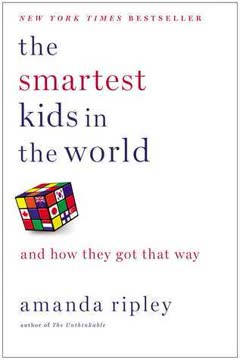

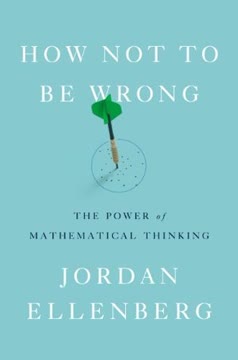
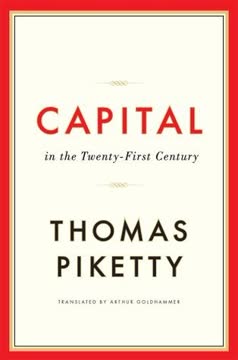
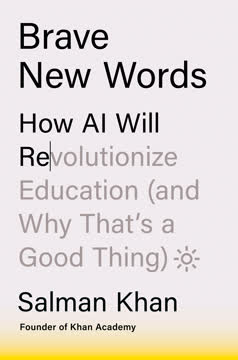

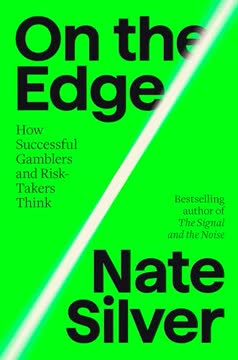
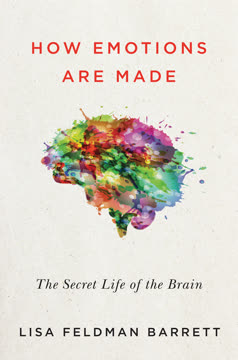
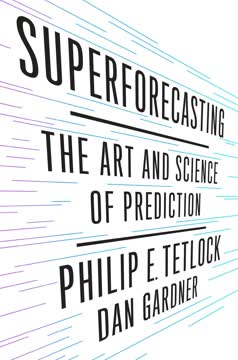
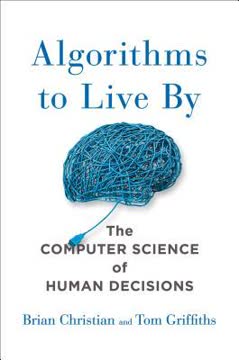
Download PDF
Download EPUB
.epub digital book format is ideal for reading ebooks on phones, tablets, and e-readers.
